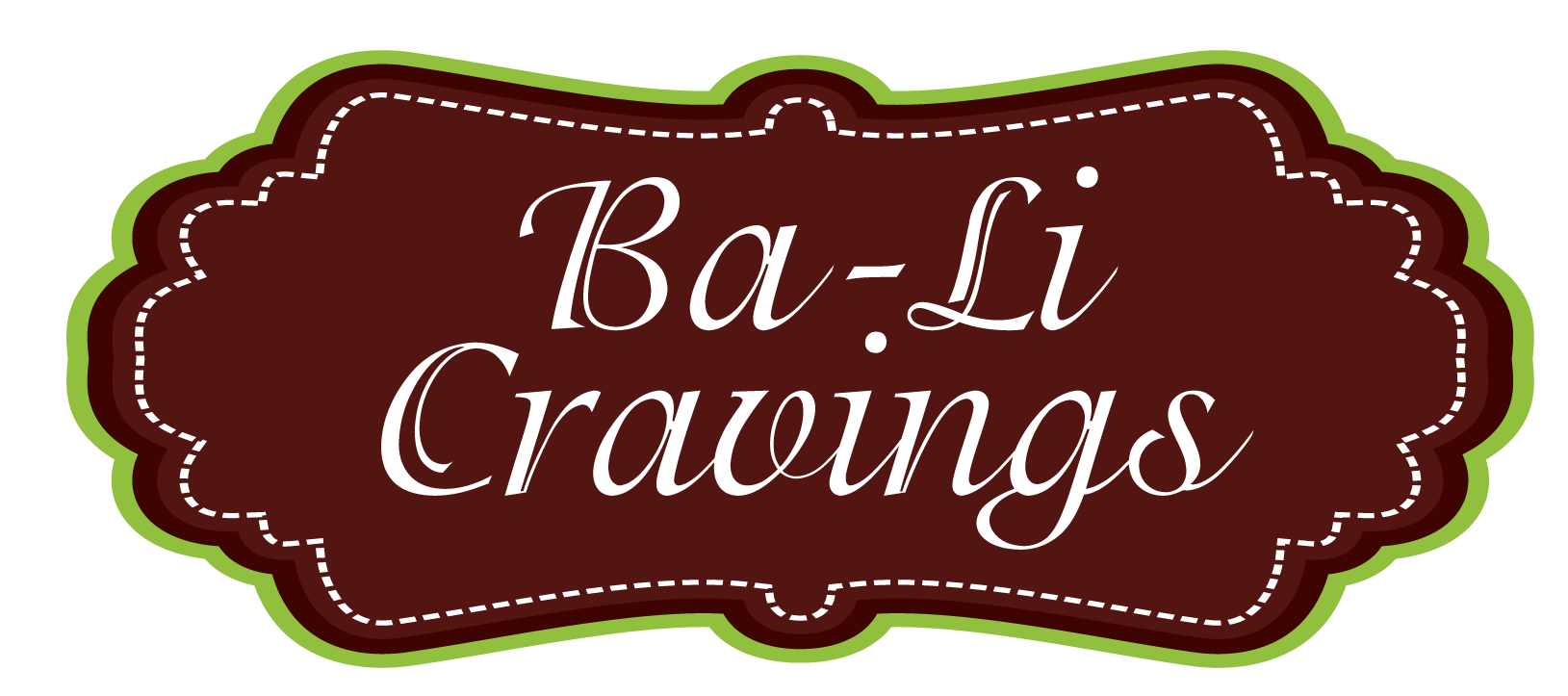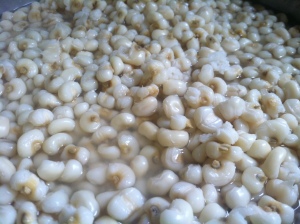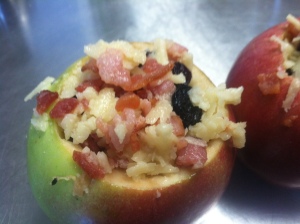My Culinary Journey Through the History of the Finger Lakes
The book “Culinary History of the Finger Lakes” starts with the first people to arrive in the Finger Lakes over ten thousand years ago from Asia. The Paleo-Indians. The first Native Americans were the Lamoka Indians who settled here in what is considered the oldest prehistoric village in New-York. But our story starts with the Iroquois who were unbelievable farmers. They truly understood the land and how to grow more than 50% of their food. They knew how to take this very fertile land and make use of it. The Iroquois are my passion and I love reading about them. They became a political and economic power for a reason. They had very sophisticated farming and maybe their success was due to the fact that they were a matriarchal society, where woman “held the knowledge, controlled all aspects of farming in the villages and were the source of the skills and expertise*” Laura Winter Falk’s book is full of stories about the Finger Lakes and the people who have made this place as wonderful as it is today. The book features 16 recipes, all paired with wines. I was lucky to be asked to prepare 5 recipes, made by 5 different chefs, representing different times in history.
Every chapter offers insight to a different time in history and ends with recipes, put together by local chefs and paired with wonderful local wines. The recipes represent the era and the ingredients available at the time. The first recipe was Three Sisters Soup representing the Iroquois who grew corn, beans and pumpkins. This recipe, by Mary Jane Challen-Kircher was fun to make because it used dried Iroquois white corn that need to be soaked for many hours, then they need to be cooked for many more hours to get to a unique consistence.
When eating Iroquois white corn, you realize how different today’s corn is. The Iroquois corn is filling, you need to chew it and it has a lot of presence, unlike today’s corn. I found the recipe needed some adjustments but the final soup was truly delicious. I would love to try Iroquois white corn again.
 The next recipe I made was Samantha Buyskes‘s Old-Fashioned Savory Apple Dumpling and this recipe was great. The recipe represented the late 1700’s, “When the Apple was King….”.
The next recipe I made was Samantha Buyskes‘s Old-Fashioned Savory Apple Dumpling and this recipe was great. The recipe represented the late 1700’s, “When the Apple was King….”.
Samantha is a great chef with wonderful creations and uses pork a lot, from what I’ve seen so far. This recipe used buckwheat for the dumplings that produced a nice crispy crust and apples filled cheddar, bacon and raisins.
The filled apples were indeed sweet and savory and the combination was comforting and felt like fall.
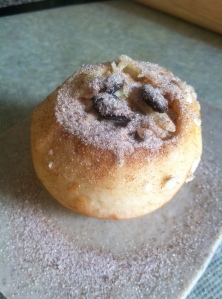 NY has wonderful apples and this is a great way to try and bake them.
NY has wonderful apples and this is a great way to try and bake them.
My family’s favorite recipe was Moosewood’s Greek Lemon-Mint Beans and Vegetables. This recipe dates back to the restaurants early days in the 1970’s and is still wonderful and relevant today. For me, it reminded my a lot of a good Jewish Gevetz recipe (type of ratatouille). I made a try run of this, before the event and my kids ate it the whole pot.
What I appreciate in this recipe is the respect for the vegetables. They are cooked just enough to be soft, but stay crispy and fresh. The attention to the seasoning leaves space for the vegetables own flavors and is a real treat.
I made a green rice to go with it and have made it after Laura’s event as well. 
Towards the end of the book, Chef Suzanne Stack created her Beet Tower, a beautiful beet dish that is not only delicious but is a joy for the eyes. I am a big fan of goat cheese and Suzanne elevates local Lively Run Chevre (my favorite) goat cheese adding chopped chives, and heavy cream. The beets were baked in the oven and the tower stacked just before serving. The cheese has to be cold to hold and Suzanne added a wonderful sherry vinaigrette dressing that compliments it perfectly.
This recipe is delicate, full of flavor and fun to eat.
The final recipe is a last-minute sweet addition by one of my favorite local Chefs – Emma Frisch. Emma is a talented young chef, who is the co-owner of a new beautiful place called the Firelight Camps on Rt. 96B in Ithaca. Emma also writes a blog and was a finalist on Food Networks Star.
 “I love to make bite size desserts – and every bite counts!” Emma starts her story about her decadent Black Fig Truffles.
“I love to make bite size desserts – and every bite counts!” Emma starts her story about her decadent Black Fig Truffles.
Through out her recipe, Emma reminds the reader to nibble along the way and lick the pot. Truthfully, the truffles are just that good.
All the recipes mentioned here can be found in the book, and I recommend you buying the book and trying the recipes. I decided to add here the Fig & Pecan Truffles recipe so you can make them and enjoy them!
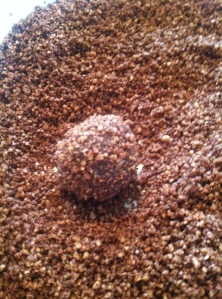 Fig & Pecan Truffles (Paired with Ports of New-York Red Meleau)
Fig & Pecan Truffles (Paired with Ports of New-York Red Meleau)
By Emma Frisch
Yields 24 truffles
Ingredients:
1/2 pound dried black mission figs
8 ounce bittersweet chocolate chips
2 tbsp. water
2 tbsp. butter
3/4 cup heavy cream
1 cup whole pecans
1/3 cup cocoa powder
Process:
1. Prepare the figs- remove stem and mince the figs as best as you can- don’t forget to nibble as you go.
2. In a small saucepan over low heat, add the chocolate chips and water. Stir until smooth.
3. Stir in the butter until the melted chocolate becomes smooth and shiny.
4.Drizzle the heavy cream, stirring to mix thoroughly. Remove from heat.
5. Stir in the fig pieces and then pour the chocolate into a deep baking dish. Set in the fridge for an hour to harden (Lick the pot clean.)
6. While the chocolate is setting, prepare the cocoa and pecan coating. Preheat the oven to 250 degrees.
7. Grind the pecans into a fine meal in a food processor or blender. Spread evenly on a baking sheet and toast for 10 minutes.
8. Transfer the ground pecans to a plate and toss with cocoa powder.
9. Remove the chocolate from the refrigerator. Using your hands, roll the chocolate into small balls and roll in the pecan and cocoa mixture.
10. Serve immediately or store in the refrigerator.
These are delicious!
I encourage you to look for Laura’s book at Barnes & Noble, regional book stores, or order it on Amazon. You will enjoy it and learn a lot about the history of this magical region.
*** Click on any of the Chefs to learn more about them.
Non Dairy Version – Black Fig Truffles –
I made a Vegan version of the Truffles for an event, and wanted to add the changes if you want it non dairy….
Replace the chocolate with 70% chocolate that has no dairy in it.
For me, chocolate truffles demand espresso so instead of 3/4 cup heavy cream I put 2/3 cup non dairy heavy cream (Richs) and the rest espresso and espresso liqueur. Lastly, replace the butter with refined coconut oil and you get phenomenal black fig truffles! Yum!
* The Culinary History of the Fingerlakes, by Laura Winter Falk, pg. 24.
